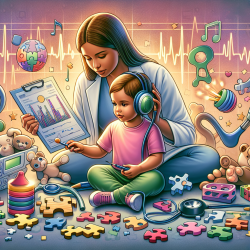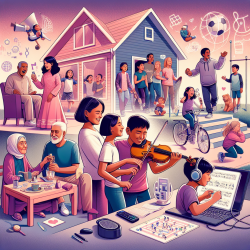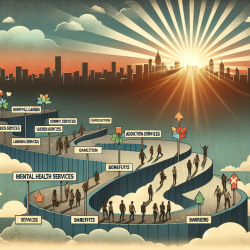Introduction
In the realm of adolescent mental health, non-suicidal self-injury (NSSI) stands as a significant concern. Defined as intentional self-inflicted harm without suicidal intent, NSSI affects nearly 18% of adolescents, with girls reporting higher rates than boys. Understanding the pathways leading to NSSI is crucial for educators, therapists, and parents alike. A recent study titled "Non-Suicidal Self-Injury Among Adolescents: A Structural Model with Socioecological Connectedness, Bullying Victimization, and Depression" sheds light on how socioecological connectedness can serve as a protective factor against NSSI.
The Role of Socioecological Connectedness
Socioecological connectedness refers to the dynamic and complex relationships adolescents have with their family, peers, school, and community. This study highlights that strong connections with family and school environments can significantly reduce the likelihood of NSSI in adolescents. These connections provide a sense of belonging and support, which are crucial during the turbulent years of adolescence.
Key Findings and Implications
The study found that higher perceptions of connectedness with family were directly associated with a lower likelihood of NSSI. Additionally, school connectedness, while not directly linked to NSSI, played an indirect role through its impact on bullying victimization and depressive symptoms. These findings underscore the importance of fostering strong family bonds and supportive school environments.
- Family Connectedness: Adolescents who feel loved, valued, and respected by their family are less likely to engage in NSSI. This connection serves as a buffer against the negative impacts of bullying and depression.
- School Environment: A supportive school environment can indirectly reduce NSSI by minimizing bullying and depressive symptoms. Schools can play a pivotal role by implementing programs that promote connectedness and emotional well-being.
Gender Differences
The study also revealed gender differences in the pathways leading to NSSI. For girls, depressive symptoms were a significant predictor of NSSI, while for boys, bullying victimization played a more critical role. This suggests that interventions may need to be tailored differently for boys and girls to effectively address the underlying causes of NSSI.
Practical Applications for Practitioners
For practitioners working with adolescents, these findings offer valuable insights into how to prevent NSSI. Here are some practical steps:
- Encourage family involvement in therapy sessions to strengthen family bonds.
- Implement school-based programs that focus on building a supportive and inclusive environment.
- Address bullying proactively by creating a safe space for students to report incidents and seek help.
- Screen for depressive symptoms regularly and provide appropriate mental health support.
Conclusion
Understanding the complex interplay between socioecological connectedness, bullying, and depression is key to preventing NSSI in adolescents. By fostering strong connections at home and in school, we can create a supportive environment that protects against self-injury. Practitioners are encouraged to integrate these insights into their work and continue exploring innovative ways to support adolescent mental health.
To read the original research paper, please follow this link: Non-Suicidal Self-Injury Among Adolescents: A Structural Model with Socioecological Connectedness, Bullying Victimization, and Depression.










